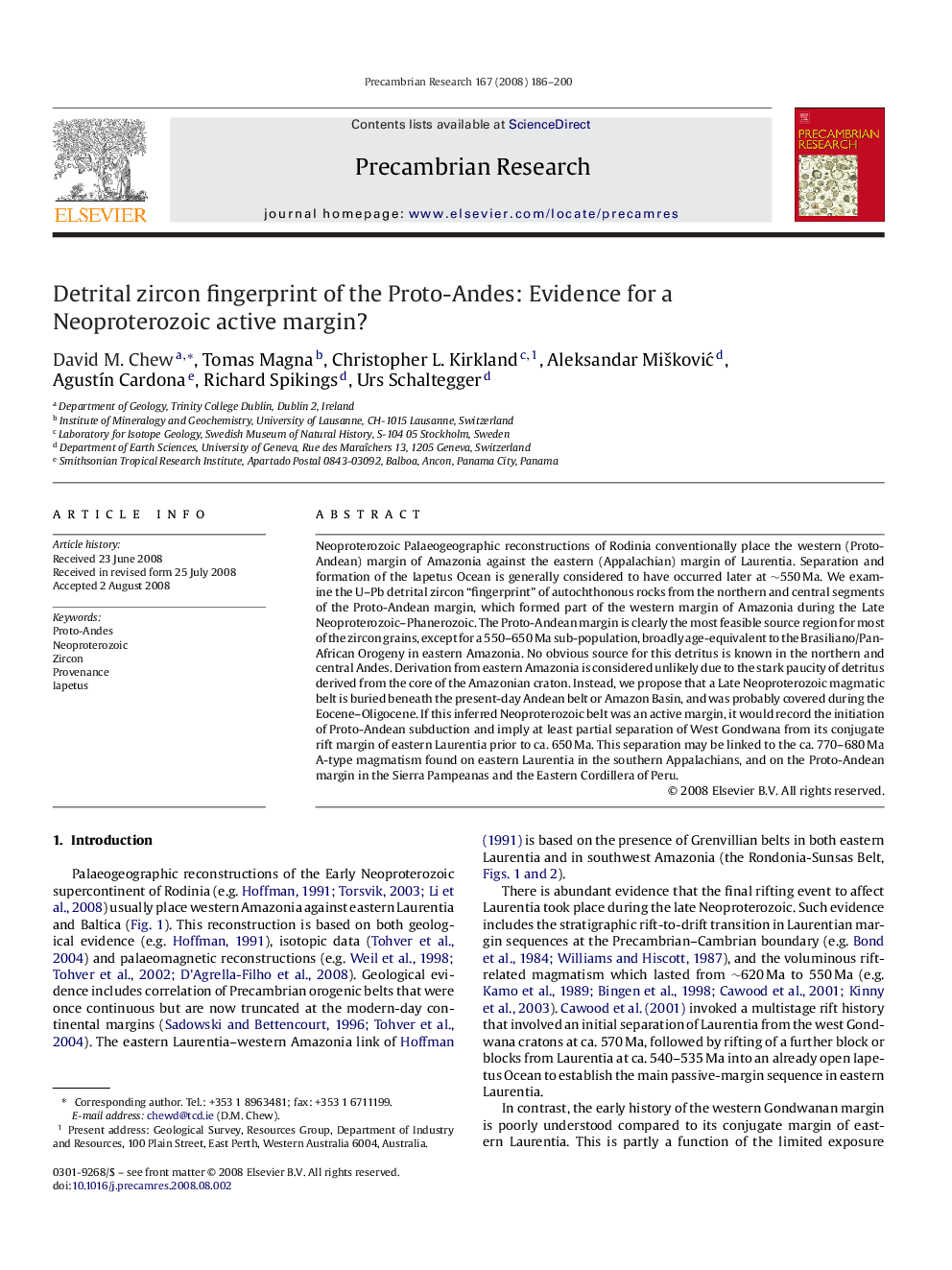| Article ID | Journal | Published Year | Pages | File Type |
|---|---|---|---|---|
| 4724092 | Precambrian Research | 2008 | 15 Pages |
Neoproterozoic Palaeogeographic reconstructions of Rodinia conventionally place the western (Proto-Andean) margin of Amazonia against the eastern (Appalachian) margin of Laurentia. Separation and formation of the Iapetus Ocean is generally considered to have occurred later at ∼550 Ma. We examine the U–Pb detrital zircon “fingerprint” of autochthonous rocks from the northern and central segments of the Proto-Andean margin, which formed part of the western margin of Amazonia during the Late Neoproterozoic–Phanerozoic. The Proto-Andean margin is clearly the most feasible source region for most of the zircon grains, except for a 550–650 Ma sub-population, broadly age-equivalent to the Brasiliano/Pan-African Orogeny in eastern Amazonia. No obvious source for this detritus is known in the northern and central Andes. Derivation from eastern Amazonia is considered unlikely due to the stark paucity of detritus derived from the core of the Amazonian craton. Instead, we propose that a Late Neoproterozoic magmatic belt is buried beneath the present-day Andean belt or Amazon Basin, and was probably covered during the Eocene–Oligocene. If this inferred Neoproterozoic belt was an active margin, it would record the initiation of Proto-Andean subduction and imply at least partial separation of West Gondwana from its conjugate rift margin of eastern Laurentia prior to ca. 650 Ma. This separation may be linked to the ca. 770–680 Ma A-type magmatism found on eastern Laurentia in the southern Appalachians, and on the Proto-Andean margin in the Sierra Pampeanas and the Eastern Cordillera of Peru.
